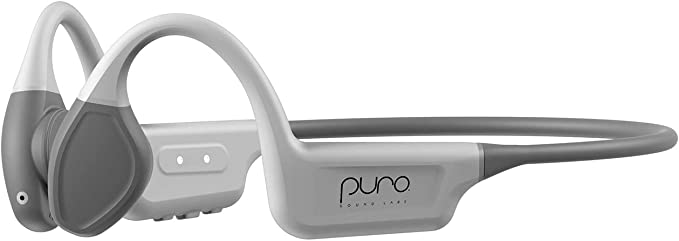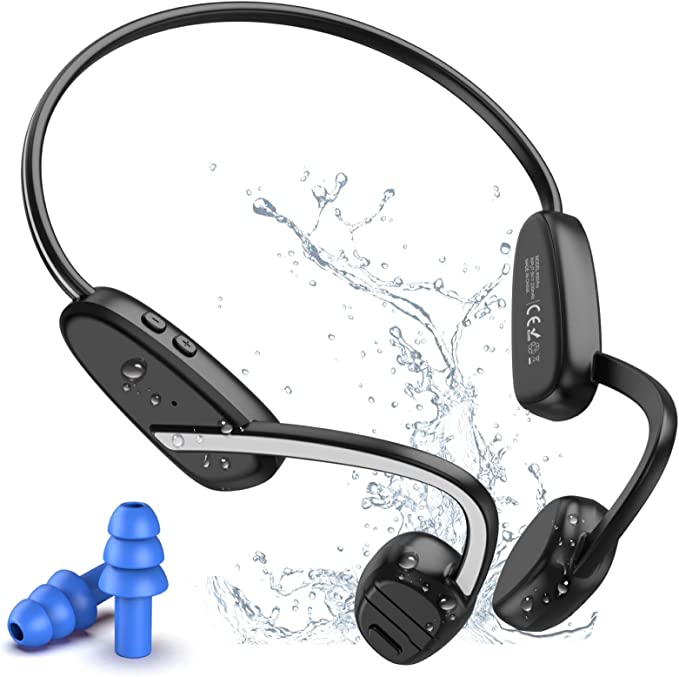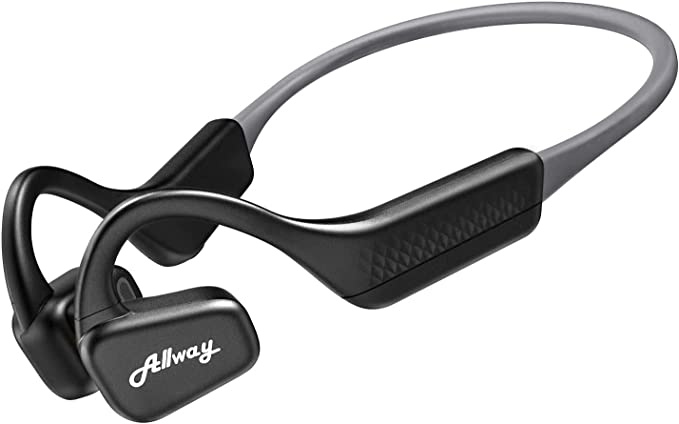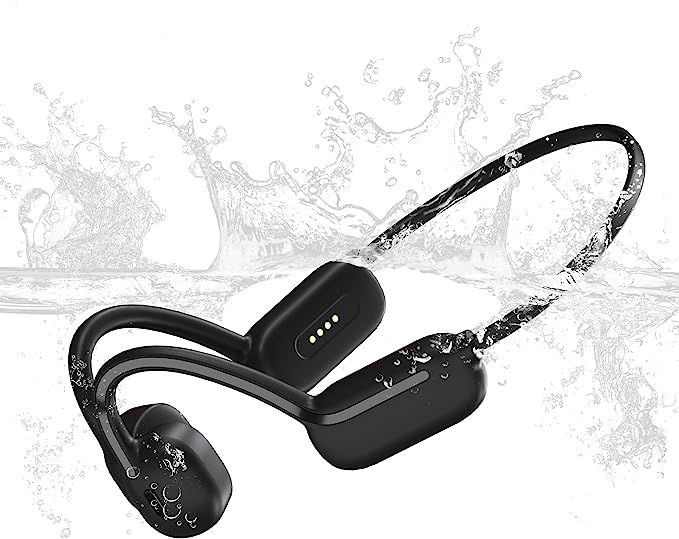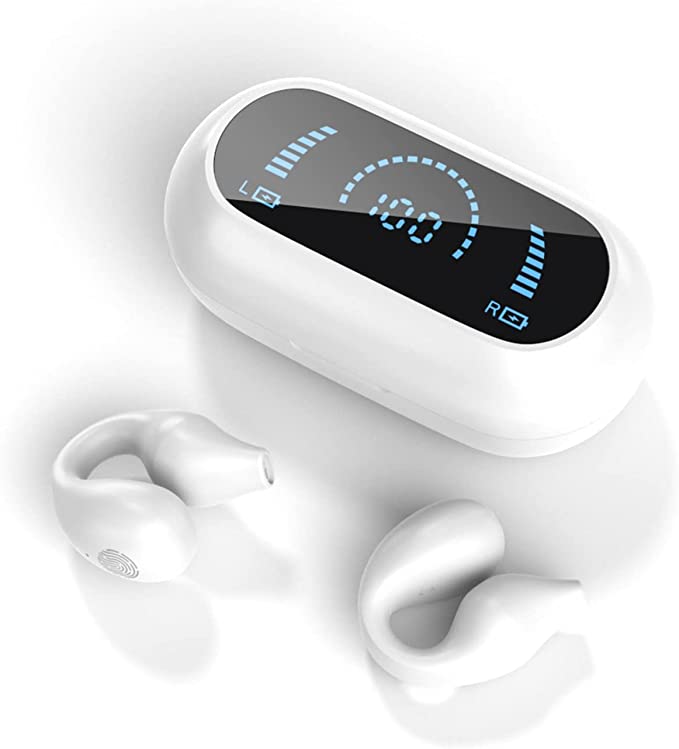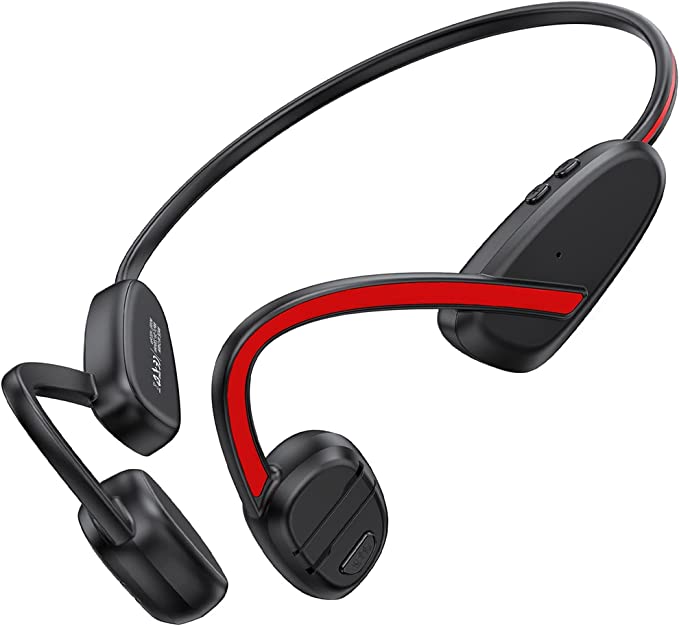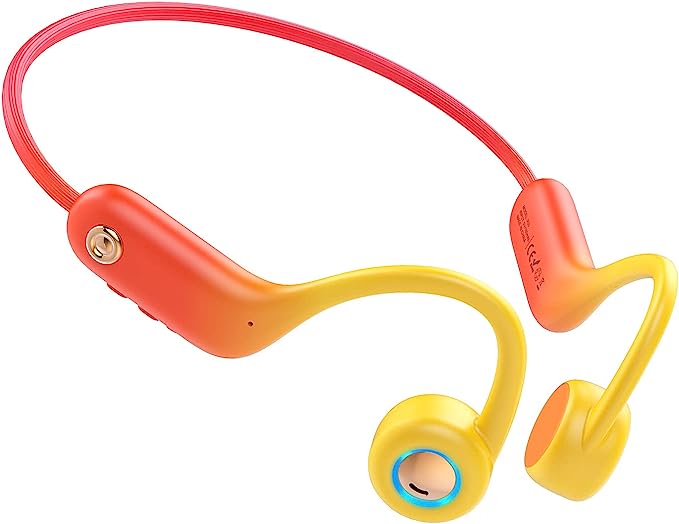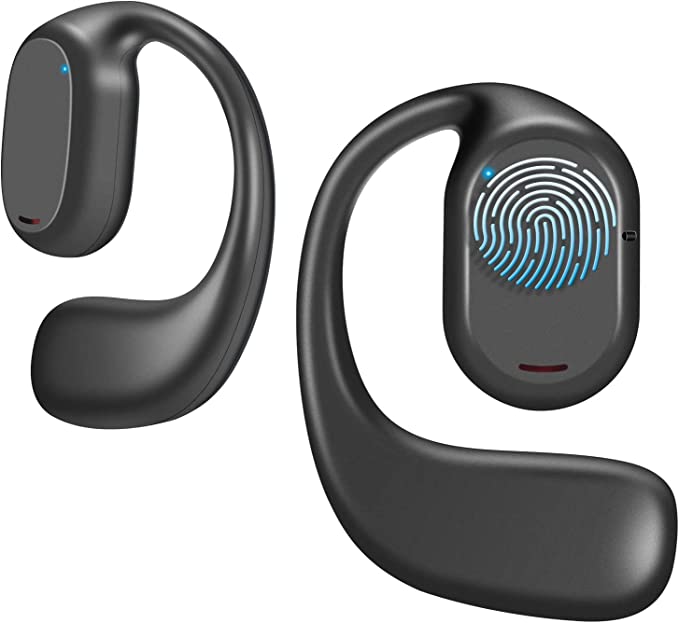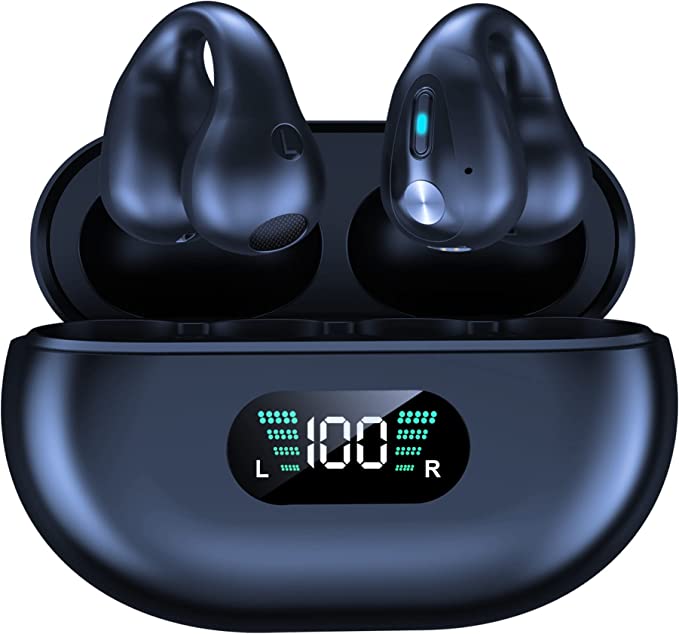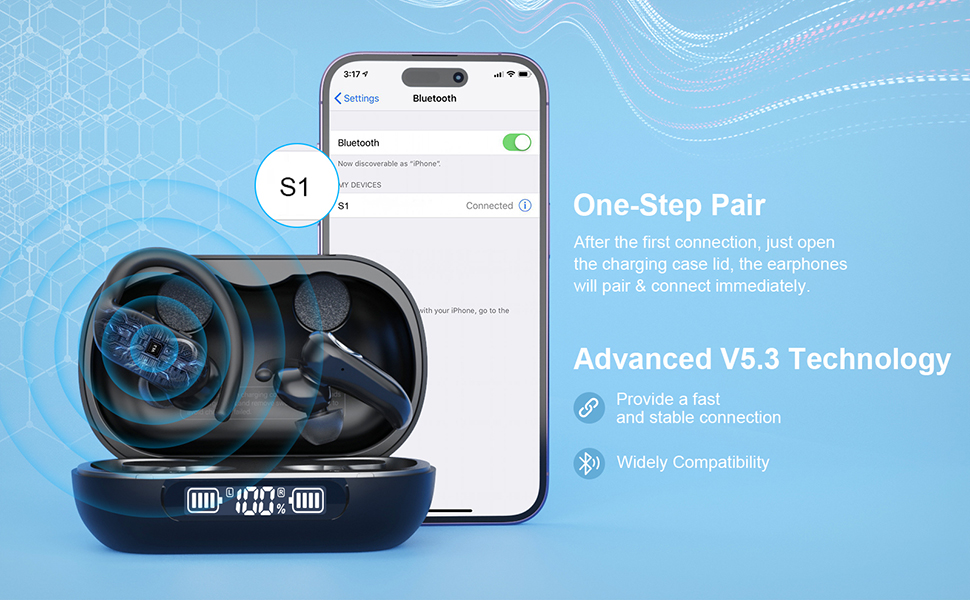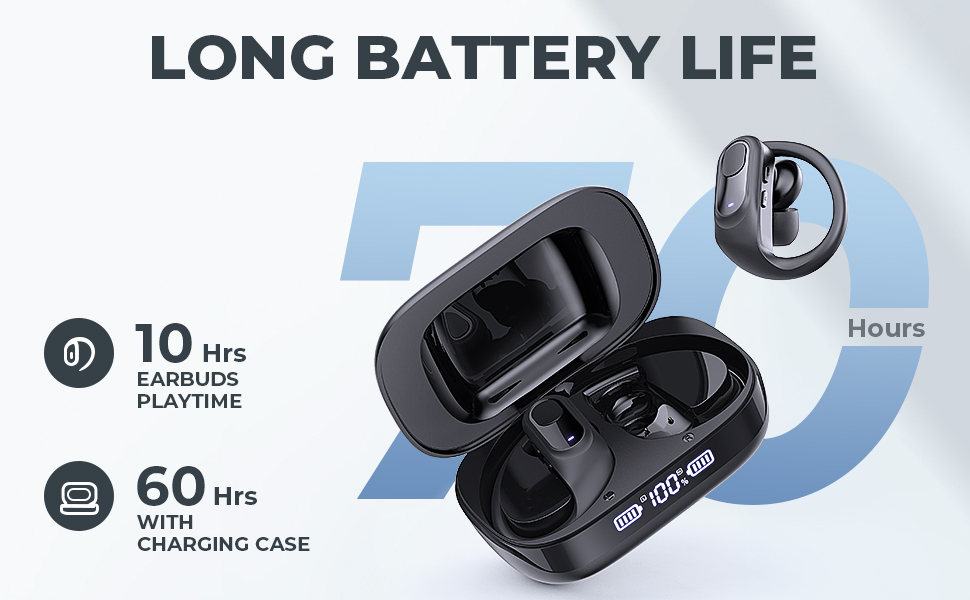Yiter Wireless Ear Clip Headphones: Exploring Open-Ear Audio, Bone Conduction Principles, and Situational Awareness
Update on May 19, 2025, 6:02 p.m.
We live in a fascinating, if sometimes cacophonous, auditory age. Our ears are often conduits to a digital stream – music that moves us, podcasts that inform, calls that connect. Yet, we remain tethered to the physical world, a world that demands our attention through its own subtle (and sometimes not-so-subtle) symphony of sounds: the approaching cyclist, a colleague’s query, the gentle hum of a city waking up. The challenge? How to harmonize these two soundscapes without one obliterating the other. This very dilemma has fueled a fascinating evolution in personal audio, leading us to the burgeoning realm of “open-ear” listening, a space where devices like the Yiter Wireless Ear Clip Bone Conduction Headphones are making their presence known.
But what exactly does it mean to listen with “open ears,” and how does a technology famously associated with Ludwig van Beethoven find its way into a sleek, modern ear clip? Let’s tune in and find out.

A Different Kind of Resonance: The Science and Story of Bone Conduction
Most of us experience sound through what scientists call air conduction. Imagine it as a well-trodden highway: sound waves, which are essentially vibrations in the air, are caught by the intricate funnels of our outer ears. They then travel down the ear canal to vibrate the eardrum. These vibrations are mechanically amplified by a delicate chain of tiny bones in the middle ear (the ossicles – you might remember them as the hammer, anvil, and stirrup from biology class) before reaching the cochlea, a snail-shaped organ in the inner ear. Here, these mechanical vibrations are finally transformed into electrical nerve impulses that our brain decodes as sound. It’s a marvel of biological engineering.
But there’s another, less conventional pathway for sound to reach our inner ear: bone conduction. Picture this as a hidden trail, one that bypasses the outer and middle ear entirely. Instead of air vibrations, bone conduction relies on mechanical vibrations transmitted directly through the bones of our skull to the cochlea. Yes, your skull can sing, in a manner of speaking.
This isn’t some newfangled discovery. History offers a poignant example in the brilliant composer Ludwig van Beethoven. As his hearing tragically deteriorated, Beethoven reportedly found a way to perceive the notes he was playing by clenching a special rod in his teeth and resting the other end on his piano. The vibrations from the piano would travel through the rod, through his jawbone, and directly to his inner ears, allowing him to “hear” his compositions. This rudimentary setup was a lifeline to his art.
In a more modern context, “true” bone conduction headphones aim to replicate this by placing transducers (vibrating elements) on specific bones, typically the temporal bones just in front of the ears or sometimes the cheekbones. These transducers create vibrations that travel through the bone to the cochlea, leaving the ear canal completely open.
Beyond Bones: The Expanding Universe of Open-Ear Audio
Now, while bone conduction is a specific scientific mechanism, the term “open-ear audio” casts a wider net. It encompasses any audio technology that delivers sound to the listener without blocking the ear canal. The primary goal here is situational awareness: the ability to hear your music or call while still perceiving the sounds of your environment.
Why is this so important? For a cyclist, it means hearing an approaching car. For a runner in a park, it’s about being aware of other people or animals. For a parent working from home, it’s hearing their child in the next room. For some, it’s simply about the comfort of not having something inserted into their ear canal, or the desire to remain socially accessible.
This broader “open-ear” category includes not only bone conduction devices but also those that use miniature directional speakers. These speakers are cleverly positioned near the ear canal opening, aiming sound waves towards it without creating a seal. Think of audio sunglasses or some designs of ear-mounted clips. While the sound still technically travels through the air for that final short hop into the ear canal, the overall effect is similar to bone conduction in that the ear isn’t occluded, allowing ambient sounds to filter in naturally.

Yiter Ear Clips: A New Note in Personal Audio?
This brings us to the Yiter Wireless Ear Clip Bone Conduction Headphones. With their distinct “earring appearance” and clip-on design, they immediately signal an intention to be different from traditional earbuds or bulky over-ear cans. The manufacturer highlights a featherlight construction, with each earphone weighing a claimed 8.6 grams. This pursuit of “painless wearing” is a critical aspect of wearable technology. After all, what good is advanced audio if the device itself is a burden? Generally, comfort in ear-worn devices hinges on a delicate balance of minimal weight, even pressure distribution, and materials that don’t irritate the skin. The ear clip style, in particular, aims to avoid the in-ear pressure that some find uncomfortable, resting on the ear’s cartilage instead.

Feature Deconstruction: Unpacking Yiter’s Sound and Smarts
Let’s delve deeper into what makes these Yiter ear clips tick, moving beyond the surface and examining their core claims and underlying technology.
The Auditory Pathway: “Bone Conduction” Claims Meet On-Ear Reality
Yiter’s product description boldly states that it “uses bone conduction technology, and the sound reaches the brain through the vibration of the bones!” This is a strong claim, aligning with the historical and scientific understanding of sound bypassing the eardrum. However, a closer look at the provided information, particularly the Q\&A section and a revealing user review, invites a more nuanced interpretation.
When a user inquired about low volume, the advice given was to “please note the direction of the earbuds when wearing, the large part (with charging metal head) is behind ear, and small part (with speaker) inside.” The explicit mention of a “speaker” in the “small part inside” (presumably meaning inside the curve of the ear, pointing towards the canal) is a significant clue. This is further corroborated by a user review (Dare to Dream, 3.0 stars) which observed, “They are simply small speakers you place near your ear canal.”
From an audio engineering perspective, these details suggest that while the Yiter headphones aim for the benefits of an open-ear experience akin to bone conduction (primarily situational awareness), their actual mechanism of sound delivery likely leans more towards a directional mini-speaker design. These speakers would be positioned to project sound towards the ear canal opening without sealing it, thus allowing ambient sounds to remain audible. This is a perfectly valid way to achieve an open-ear outcome and has its own engineering merits. It’s important for consumers to understand that the term “bone conduction” can sometimes be used in a broader marketing sense to describe the experience of open-ear listening, even if the underlying physics don’t strictly involve direct osseous vibration as the primary sound pathway. The key takeaway is that the design facilitates hearing your surroundings, which aligns with the core promise.

The Wireless Lifeline: Bluetooth 5.3 + EDR in Plain English
The Yiter headphones are equipped with “Bluetooth 5.3 + EDR.” That sounds impressively current, but what does it actually mean for your listening experience? Think of Bluetooth as the invisible pipe carrying audio data from your phone (or other device) to your ears. Newer versions, like 5.3, are generally designed to be wider, faster, and more efficient pipes.
The product claims this version leads to “greatly improving synchronization performance,” which is crucial for avoiding that annoying lag between video and audio, especially in games or movies. It also mentions “power saving” and “less sound interruption.” Bluetooth 5.3 achieves these improvements through more sophisticated data handling, better interference management, and optimized power control compared to older iterations.
The “+ EDR” stands for Enhanced Data Rate. This isn’t a new feature specific to 5.3 but has been part of Bluetooth Classic for a long time. It essentially allows for a fatter data stream within that “pipe,” enabling the transmission of more audio information per second. This can contribute to better audio quality (or at least a more robust signal less prone to compression artifacts) and a more stable connection. Being compatible with IOS, iPhone, and Android devices ensures these headphones can speak the common wireless language of most modern gadgets.

The Long Haul: Powering Your Playlists (and Calls)
Wireless freedom is only as good as the battery that sustains it. Yiter claims its ear clips offer up to 6 hours of use on a single full charge, with the companion charging case extending this total playback time to a substantial 35 hours. This kind of endurance is a welcome feature for users who are often on the move or simply forget to charge their devices religiously.
The efficiency of Bluetooth 5.3 plays a direct role here. By consuming less power to maintain a stable connection and transmit data, the tiny batteries within each 8.6g earphone can last longer. The charging case then acts as a portable power bank, topping up the earbuds multiple times before it needs a recharge itself.
Effortless Connection: The Quiet Convenience of Auto-Pairing
A small but significant quality-of-life feature is the “auto pairing function.” After the initial setup, the headphones are designed to automatically reconnect to the last used device as soon as they’re taken out of the charging case. This eliminates the often-fiddly process of manually selecting the device from Bluetooth menus each time you want to listen. Behind the scenes, your host device and the headphones remember each other, performing a quick digital handshake to re-establish the link, allowing for almost immediate use.

Living in the Open: The Open-Ear Lifestyle – Benefits and Caveats
So, who stands to benefit most from an open-ear audio solution like the Yiter ear clips, and what are the practical considerations?
The most obvious candidates are individuals engaged in activities where situational awareness is paramount. Think cyclists navigating traffic, runners on shared paths, or even hikers wanting to stay alert to the sounds of nature (or other people). In an office environment, they might allow you to listen to focus-enhancing music while still being able to hear a colleague calling your name. For those who find in-ear earbuds uncomfortable due to pressure or a feeling of being “plugged up,” an on-ear clip design can offer a welcome alternative.
However, openness is a double-edged sword. The very design that allows you to hear your surroundings also means these headphones are not designed for noise cancellation. Yiter’s Q\&A is refreshingly direct about this: “The wireless ear clip headphones does not have a noise cancellation function… if you’re looking for noise-cancelling or something to block out ambient sounds, this is not for you.” If your goal is to obliterate the drone of an airplane engine or the chatter of a busy café, an open-ear design is fundamentally unsuited for the task.
Another common characteristic of open-ear designs can be sound leakage, meaning people nearby might faintly hear what you’re listening to, especially at higher volumes. While the Yiter product page doesn’t explicitly detail this, one user review mentioned, “Others can faintly hear what you are listening to.” Furthermore, the bass response in open designs can sometimes feel less impactful compared to sealed in-ear or over-ear headphones that create an acoustic chamber.
User experiences with the Yiter headphones, based on the limited provided feedback (a 3.6 out of 5-star average from 69 ratings), reflect some of these general considerations for the category. Comfort, for example, seems subjective: one user found them exceptionally comfortable (“Can’t even feel them”), while another reported they “Kind of hurts the ears still.” Loudness in noisy environments was also a point of discussion, with one user noting they “could be a little louder.” These are not necessarily flaws unique to Yiter, but rather common challenges and subjective factors inherent in designing lightweight, open-ear audio devices that must balance comfort, sound delivery, and awareness.

Coda: Tuning into an Informed Audio Future
The world of personal audio is continuously evolving, driven by our desire for ever-more seamless and integrated sound experiences. The Yiter Wireless Ear Clip Headphones, with their unique design and open-ear approach (facilitated likely by directional speakers despite the “bone conduction” branding), represent one of many attempts to solve the puzzle of how to blend our digital soundscapes with the demands and delights of the physical world.
Understanding the science behind terms like “bone conduction,” appreciating the nuances of Bluetooth technology, and recognizing the inherent trade-offs in any audio design empowers you, the listener. It allows you to move beyond marketing buzzwords and make choices that truly resonate with your auditory lifestyle. Whether it’s through direct bone vibration, clever near-ear acoustics, or technologies yet to emerge, the quest for that perfect, harmonious balance between our connected selves and our present surroundings continues. And that, in itself, is a sound worth listening to.
